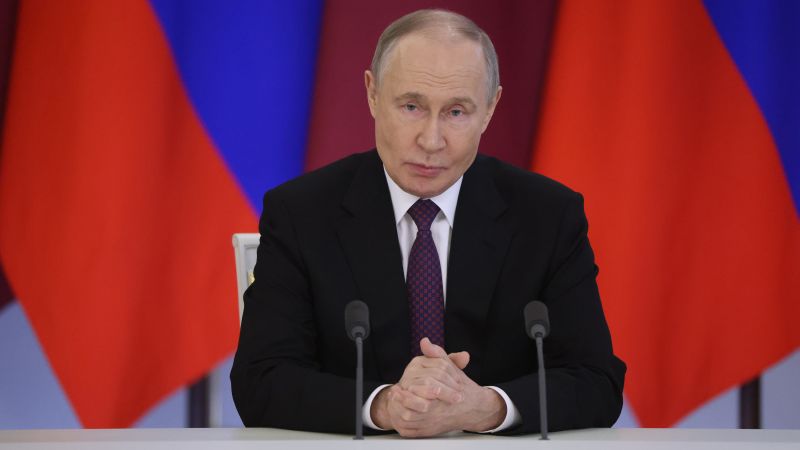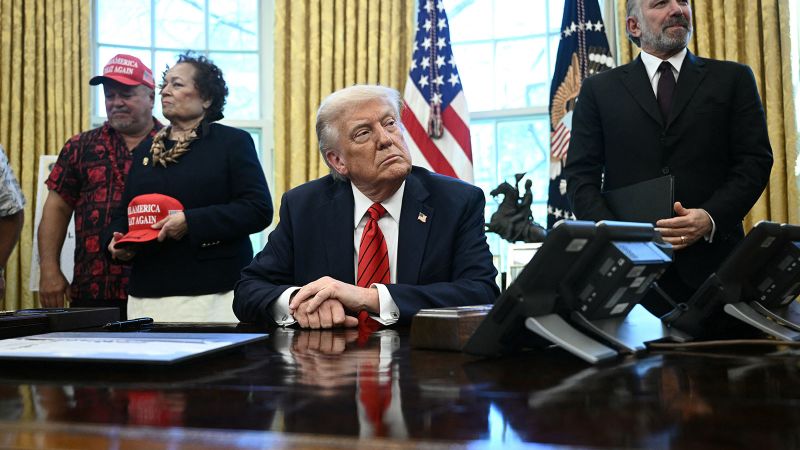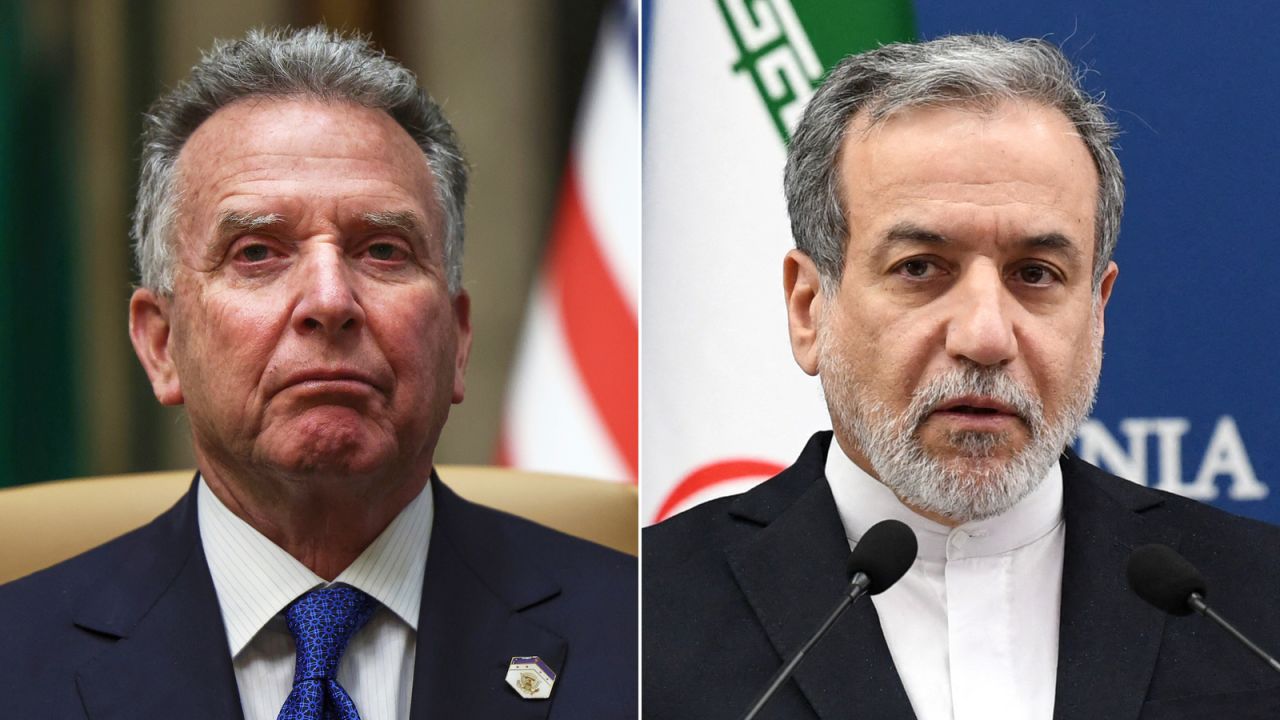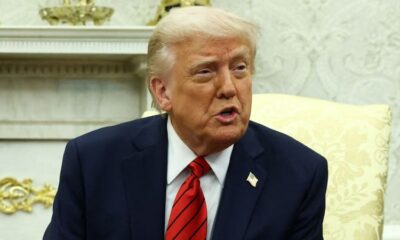CNN
—
Russian President Vladimir Putin declared a brief Easter ceasefire in his war with Ukraine, a declaration met with skepticism in Kyiv as the war enters a crucial phase and US-led negotiations stall.
Putin said “all hostilities” would halt between 6 p.m. Moscow time on Saturday (11 a.m. ET) and midnight on Monday (5 p.m. Sunday ET).
“We assume that the Ukrainian side will follow our example,” he said, adding that the truce would help Russia determine how sincere Kyiv is about wanting to reach a ceasefire.
However, just hours after the announcement, Ukrainian officials accused Russian forces of continuing to fight. “According to the report of the commander-in-chief, Russian assault operations continue in some parts of the frontline and Russian artillery continues to fire,” Ukrainian President Volodymyr Zelensky said in an address on Saturday night.
Kyiv has responded to the truce declaration with skepticism, with Zelensky pointing out that Putin still has not agreed to a US-led proposal for 30 days of ceasefire.
“If Russia is now suddenly ready to actually join the format of complete and unconditional silence, Ukraine will act in a mirror image, as it will on the Russian side. Silence in response to silence, strikes in defense of strikes,” Zelensky said, calling for the Easter truce to be extended to 30 days.
“This will show Russia’s true intentions, because 30 hours is enough for headlines, but not for real confidence-building measures. Thirty days can give peace a chance,” he said.
The timing of the announcement also sparked some questions – coming one day after the Trump administration indicated it was running out of patience with Russia and Ukraine, and just hours after Russia’s Defense Ministry announced its forces had pushed Ukrainian troops from one of their last remaining footholds in Russia’s Kursk region, where the Ukrainians staged a surprise incursion last year.
“Unfortunately, we have had a long history of (Putin’s) statements not matching his actions… Russia can agree at any time to the proposal for a full and unconditional 30-day ceasefire, which has been on the table since March,” Ukraine’s Foreign Minister Andrii Sybiha said on X.
The head of Kherson’s regional military administration, Oleksandr Prokudin, said on Saturday evening local time that a high-rise building in the Dniprovskyi district of Kherson had caught fire after being struck by drones. Russian drones also attacked the villages of Urozhayne and Stanislav, he said.
“Unfortunately, we do not observe any ceasefire. The shelling continues and civilians are under attack again,” Prokudin said. “This is another confirmation that Russia has nothing sacred.”
CNN has reached out to the Russian Ministry of Foreign Affairs for comment.
Air raid sirens sounded in Kyiv and several other regions soon after Putin’s announcement, with the city’s military administration warning of a Russian drone attack. Officials urged people not to leave shelters until the alert was over.
Andrii Kovalenko, who heads the Ukrainian Center for Countering Disinformation, a government body, said on Telegram at 7 p.m. local time that “the Russians continue to fire in all directions.” Moscow and Kyiv are currently on the same time.
Ukrainian troops at three separate locations along the front lines told CNN that as of 8 p.m. Saturday, there was no sign of fighting easing.
There have been no pauses in the conflict since Russia’s launched its unprovoked full-scale invasion in February 2022.
The sudden nature of Putin’s announcement and the short duration of the proposed truce gave Kyiv little room to prepare or maneuver. Many Ukrainian troops participating in ongoing assaults or reconnaissance missions would have been in position already, as any moves are typically made during the night due to the threat from Russian troops.
Ukraine has previously been skeptical about such temporary pauses in conflict, having rejected a temporary ceasefire in January 2023 believing that Russia had ulterior motives in calling for a stop to the fighting, such as using the pause to bring in more troops.
The 2023 truce was similarly announced by Putin to coincide with a holiday – this time with Orthodox Easter, back then with Orthodox Christmas.
Putin’s announcement comes at a pivotal time for the war.
As well as in Kursk, fighting continues along the eastern front line, which has barely moved in the past three years as neither side has been able to make significant gains.
While Ukraine has recently managed to push Russian troops back from areas around Toretsk, Russia has been inching forward near Kupyansk, Lyman and Kurakhove, according to the Institute for the Study of War, a US-based conflict monitor.
Separately, the two sides conducted one of the largest prisoner exchanges of the conflict on Saturday.
According to Zelensky, 277 captured Ukrainian soldiers were returned home. The Russian Defense Ministry said it had swapped 246 captured Ukrainian soldiers for the same number of Russian troops, and that as a “gesture of good will” Russia also exchanged 31 wounded Ukrainian troops for 15 wounded Russian servicemen.
As with previous exchanges, the swap was mediated by the United Arab Emirates.
At the same time, US-led peace efforts are stuttering as Moscow continues to stall, having previously rejected the US proposal for a 30-day ceasefire.
On Friday, US Secretary of State Marco Rubio warned that the US was ready to “move on” within days from efforts to bring peace to Ukraine, if there were no tangible signs of progress.
This is a developing story and will be updated.


























